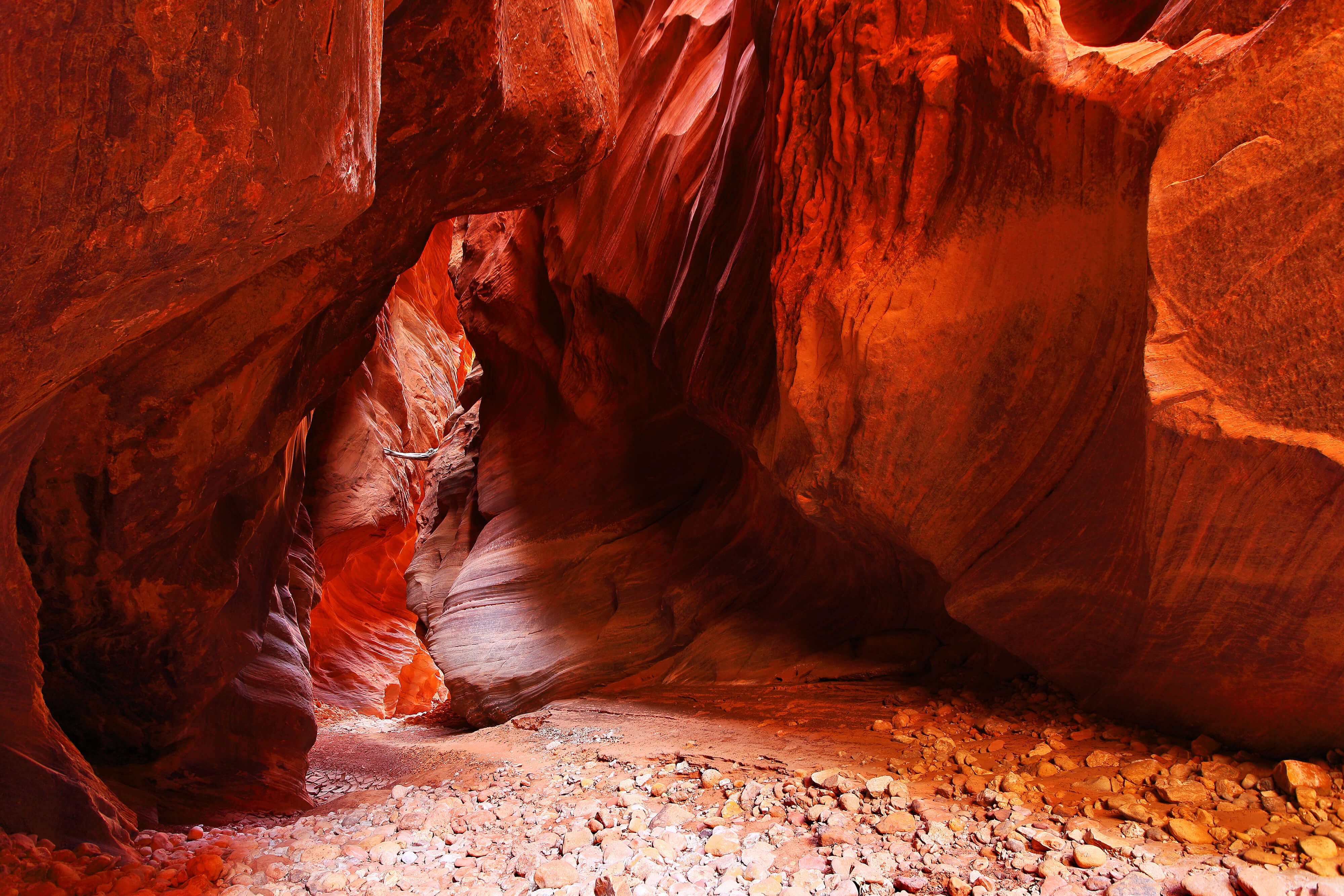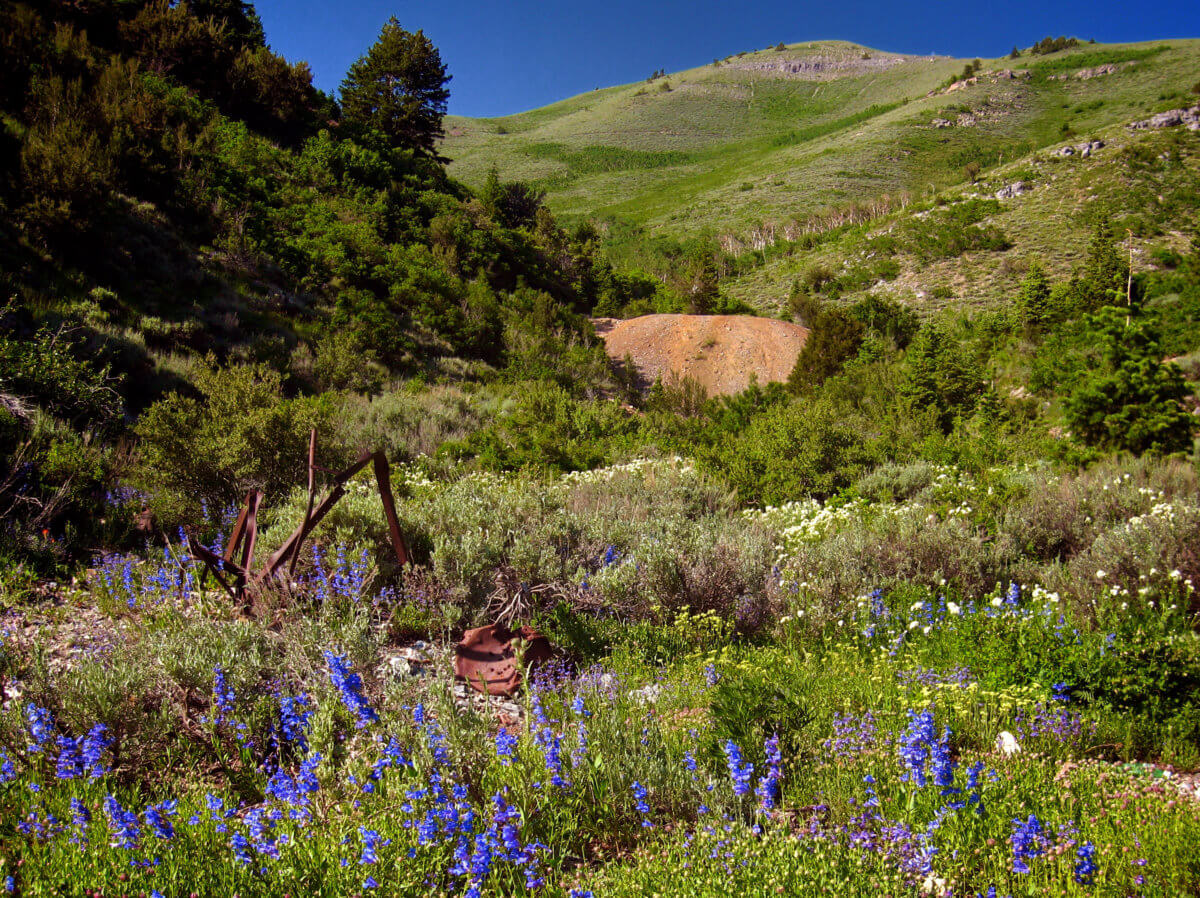Utah In The Age of Dinosaurs
 Dinosaurs lived only during the Mesozoic Era, which is often called the “Age of Dinosaurs”. Utah has perhaps the best Mesozoic rock record in the world.
Dinosaurs lived only during the Mesozoic Era, which is often called the “Age of Dinosaurs”. Utah has perhaps the best Mesozoic rock record in the world.
The Mesozoic Era (225 to 65 million years ago) is divided into three time periods: the Triassic (225-193 million years ago); the Jurassic (193-136 million years ago); and the Cretaceous (136-65 million years ago).
Triassic Period
The first dinosaurs lived near the end of the Triassic. Eoraptor, a bipedal carnivore recently discovered in South America, is the earliest known dinosaur.
Triassic dinosaurs have not yet been found in Utah. Late Triassic rocks known as the Chinle Formation are exposed throughout southern and eastern Utah. This rock unit has yielded abundant remains of the carnivorous (meat eating) dinosaur Coelophysis in Arizona and New Mexico. However fossil skeletons of other animals are known from Utah and it is only a matter of time before Utah’s first Triassic dinosaur is discovered.
Jurassic Period
During the Early and Middle Jurassic Utah was mostly desert, although periodically sea level would rise and the sea would invade this sand dune covered landscape. The great sandstone cliffs of Zion and Arches National Monument are basically fossil sand dunes. Although, dinosaur foot prints are known from many sites in Utah, no dinosaur skeletons have yet been found in these desert rocks. Marine reptiles have been found in the marine rocks near Dinosaur National Monument.
Most of Utah’s well-known dinosaur fossils are Late Jurassic dinosaurs. They are found mainly in a rock unit known as the Morrison Formation which dates to approximately 150 million years ago.
Dinosaurs are divided into two major groups, the saurischian, or “lizard-hipped”, dinosaurs and the ornithichian, or “bird-hipped”, dinosaurs.
The saurischian dinosaurs include the herbivorous (plant eaters), quadrupedal sauropods and the carnivorous, bipedal theropods.
The ornithichian dinosaurs are all herbivorous and are comprised of many groups, including stegosaurs, ornithopods, and ceratopsians.
Birds evolved from a group of thesaurischian theropods known as coelurosaurs.
Dinosaur fossils from the Morrison Formation can be found in Utah at the Dinosaur National Monument quarry in northeastern Utah and at the Cleveland-Lloyd Dinosaur Quarry in east-central Utah.
Allosaurus is Utah’s State Fossil. Allosaurus is a carnivorous theropod found in abundance at the Cleveland-Lloyd Dinosaur Quarry.
Cretaceous Period
Early Cretaceous dinosaur fossils are found in Utah in the Cedar Mountain Formation, which dates to about 125-98 million years ago. This rock unit overlies the Morrison Formation, but represents more time and contains several entirely different faunas or groups of dinosaurs. These represent at time when North America was connected to Europe before flowering plants, a period when rising sea levels led to the isolation of North America from the rest of the world, and finally a time when the first land connections with Asia were established and flowering plants had come into their own. The Cedar Mountain Formation is the basis of considerable research by UGS paleontologists.
Late Cretaceous dinosaurs such as Tyrannosaurus and Torosaurus lived about 65 million years ago at the end of the age of dinosaurs. Cretaceous dinosaur sites are found in great abundance in Montana and Alberta, Canada, and are also found in the North Horn Formation of central Utah. Further south in the Grand Staircase – Escalante National Monument the most continuous record of Cretaceous dinosaurs in the world has now been recognized and research is just beginning to bring these many undescribed Utah dinosaurs to light.
– Thanks to UGS for providing this information
 Previous Post
Previous Post Next Post
Next Post


